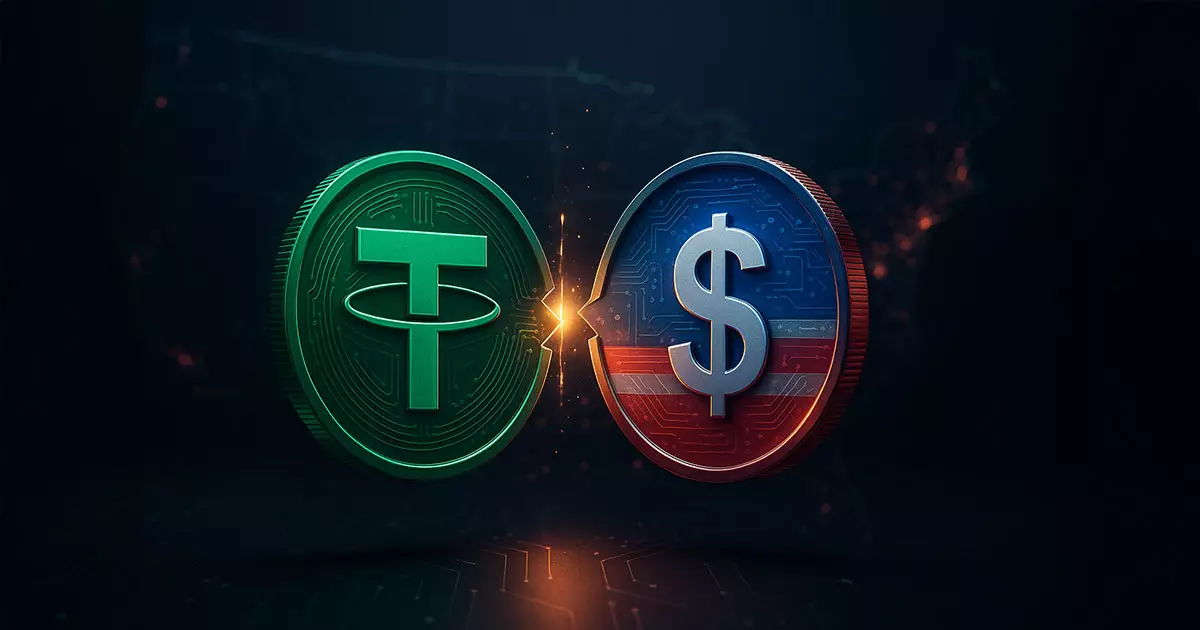The digital currency landscape is experiencing transformative changes, but none may be as significant as Tether’s potential move towards launching a homegrown stablecoin tailored specifically for the U.S. market. CEO Paolo Ardoino’s recent statements signal a newfound interest in aligning with forthcoming regulatory frameworks, particularly the Guiding and Establishing National Innovation for US Stablecoins Act, or GENIUS Act. Tether’s stablecoin, USDT, is already a giant in emerging markets, and this shift may just be what the company needs to broaden its influence, particularly among unbanked populations.
Emerging economies, such as those in Sub-Saharan Africa and parts of Asia, currently make up the bulk of Tether’s user base. Many users leverage USDT for foreign remittances and as a hedge against local currency volatility. Ardoino’s insistence that “these markets need us the most” emphasizes Tether’s commitment to serving the financially marginalized, a mission that could resonate with many who advocate for financial inclusion and innovation.
However, the terrain in the United States is qualitatively different. The complexities of the U.S. financial system and the saturation of payment options make it crucial for Tether to rethink its approach. Ardoino hinted at a domestically issued stablecoin that would carry a “different feature set” from USDT, aptly demonstrating Tether’s understanding that the American market has unique demands distinct from those in developing nations.
Regulatory Compliance and Strategic Vision
The regulatory environment surrounding cryptocurrencies is a rapidly evolving landscape, and Tether seems well aware of the importance of compliance. Ardoino expressed that Tether is taking proactive steps to ensure that USDT aligns with the GENIUS Act. The contrast he drew between the U.S.’s proposed regulations and Europe’s proposed Markets in Crypto-Assets (MiCA) regulation is particularly striking. Ardoino noted that MiCA’s requirement for U.S. dollar-backed stablecoins to maintain substantial reserves in European banks is a “bad idea.” In the U.S. context, the emphasis on holding reserves in cash equivalents, preferably in U.S. treasuries, is deemed to be a “great idea.”
This regulatory clarity that Ardoino anticipates could allow Tether not just to innovate but to genuinely compete within the established financial ecosystem. If the GENIUS Act successfully distinguishes between foreign and domestic issuers, Tether could find itself in a dominant position—one that merges regulatory compliance with the nimbleness of a tech-driven enterprise.
A Paradigm Shift for Financial Services
The U.S. market presents complex challenges but also unparalleled opportunities for innovation in financial services. For many unbanked individuals in the country, access to a stable digital dollar could be life-altering. The potential for Tether’s newly-minted stablecoin to enhance direct payment capabilities may significantly lower barriers to entry and empower those potentially sidelined in the traditional banking system.
Furthermore, Ardoino’s remarks indicate that Tether is already attuned to the fact that “in the U.S., you wouldn’t use stablecoins for payments to improve the efficiency of our money.” The challenge lies in crafting a stablecoin that is not only compliant with regulations but truly competitive by meeting specific U.S. consumer needs. The innovation potential is enormous; if successful, Tether could reshape how financial transactions occur in a digital economy that increasingly favors speed and efficiency.
Catering to the Unbanked and Underbanked
A pertinent statistic to consider is the staggering estimate put forth by the World Bank, highlighting that approximately 1.4 billion adults around the globe lack access to traditional banking systems. Many of these individuals reside in the very markets where Tether has been a disruptive force. Ardoino’s focus on this demographic establishes a bold vision: harness the capabilities of blockchain technology to offer solutions not just in the developing world but also in the United States.
Unbanked populations in the U.S. face hurdles ranging from lack of access to credit and banking services to reliance on high-interest payday loans. A U.S.-available Tether stablecoin—designed thoughtfully with compliance in mind—could provide these individuals with a financial lifeline, allowing them to store value and conduct transactions in a secure, reliable manner.
Tether’s willingness to adapt and innovate for the U.S. market illustrates a broader implication; by focusing on the needs of marginalized groups, financial technology firms can democratize access to wealth-building tools, thereby creating a more equitable financial landscape. With Tether’s momentum and the attention to compliance, the company may just be on the verge of ushering in a new era of financial inclusivity.

